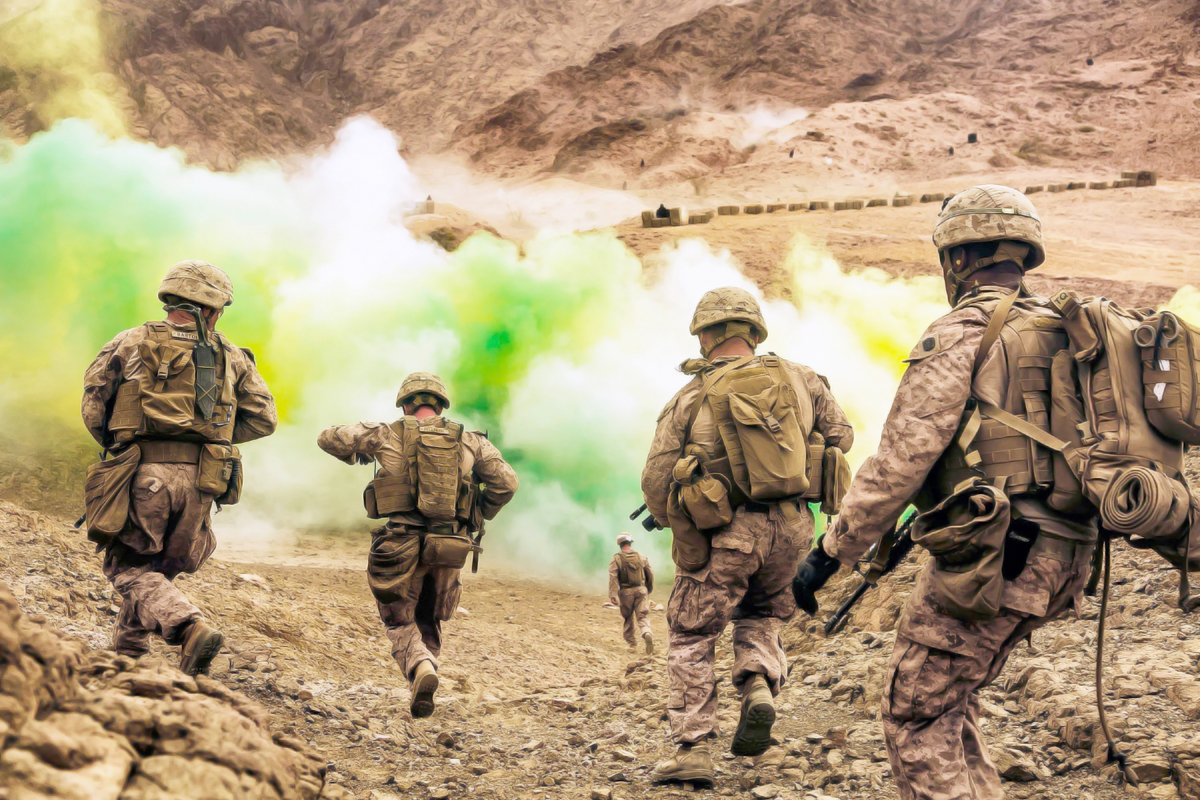SALEHA MASOOD
Iran’s increasing efforts to seize merchant ships in the Strait of Hormuz in the wake of the American confiscation of Iranian fuel-carrying vessel, have sparked grave concerns. As a response, the US has increased its Naval presence in the region, deploying various aircrafts and ships, along with around 300 Navy Personnel and Marines.
This buildup coincides with the upcoming expiration of the 2015 Iran Nuclear Deal in October. The projection of military force by the US in the Gulf may trigger the revival of potential “Tanker War”. Hard-liners in Tehran are showing strength through recent actions. This, additionally, serves as a caution to the US and its allies, indicating that Iran possesses the capability to respond, retaliate and exert influence in the Gulf region. Strait of Hormuz is a 33 kilometers narrow strait in the Persian Gulf between Iran and Oman where one-fifth of the oil tankers passes. Gulf States depend on this route for oil transportation and, therefore, express worries about Iran’s broader regional intentions. It has been reported that Iran has seized 20 commercial vessels over the past two years.
Owing to the sanctions on Iran’s oil and its limited global market access, Iran’s aggressive move to project strength and exert influence in the region is becoming evident to safeguard its territorial waters and security of the state. In response, the US is conducting patrols to ensure the free flow of oil and legal trading in the waters. The US has deployed additional warships and fighter jets along with the already installed US fighter jets F-35s, F-16s, A-10s and other warplanes. The buildup aims to deter Iran from the seizures of commercial vessels in the region.
Maintaining open access to the Strait of Hormuz is essential for the US to avoid abrupt spikes in worldwide energy prices but the recent development could potentially lead to a broader conflict as the US takes on the intricate responsibility of protecting foreign commercial activities. The US Navy’s 5th Fleet stationed since 2022 near Bahrain also revealed photographic evidence of the seizure of Liberian-flagged vessel in the Gulf. These events are escalating tensions and raising chances of military conflict in the region.
Since 2019, Iran has captured multiple ships in the Strait of Hormuz, a vital gateway to the Persian Gulf, as part of its strategy to influence talks related to its abandoned nuclear deal with world powers. The prospect of placing US troops on commercial ships could discourage Iran’s ship seizures, yet it also carries the risk of intensifying maritime tensions. General Abdolrahim Mousavi, Iran’s Army Chief commented that the US deployment would bring only “insecurity and damage” to the region.
Iran is preparing for the worst and has threatened to close the Strait in times of conflict which would disrupt the international energy markets. Following the breakdown of the nuclear deal, Iran has moved closer to enriching uranium to weapons-grade level. It has invested in speed boats, sea mines, drones, and missiles. Iran has also acquired surface-to-air missile and electronic warfare system. Its defense system can also counter the air-borne threats. Iran is also working to strengthen its government by making progress in its nuclear program.
Recently, Iran’s Defense Ministry revealed a newly produced long-range naval ballistic missile, purportedly with the ability to eliminate carriers. Iranian authorities stated they have already manufactured this “stealthy” missile, powered by artificial intelligence, with the potential to fully demolish any frigate. The US Army General, Kurilla states that: “The Iran of 2023 is not the Iran of 1983, In fact, Iran today is exponentially more militarily capable than it was even five years ago,”
The projection of military force in the Gulf seems as a diplomatic failure in de-escalating the maritime tensions. Iran’s Brig Gen. Mohammad-Reza Ashtiani states that “America is pursuing its own plans, but the Islamic Republic has reached such a level of power and authority, where no one is capable of threatening it,” It sends a message to the US and its allies that Tehran has the means to retaliate.
As diplomatic efforts remain at a standstill and Iran’s willingness for increased maritime aggression becomes evident, the US seems to be returning to its reliance on military strength to encourage Tehran to ease tensions. Nevertheless, this approach leaves the unresolved matters between the two nations to persist beyond the realm of naval interactions. Saleha Masood is Research Intern BTTN


